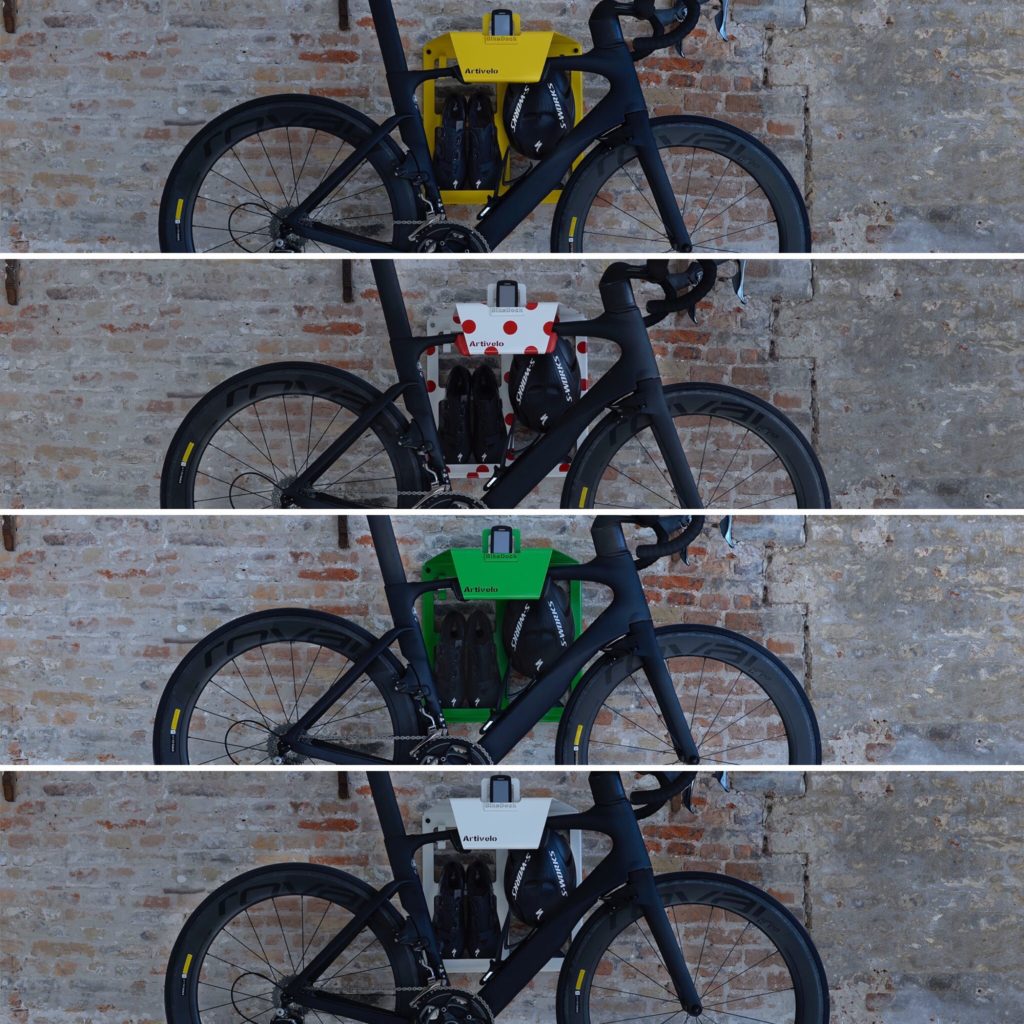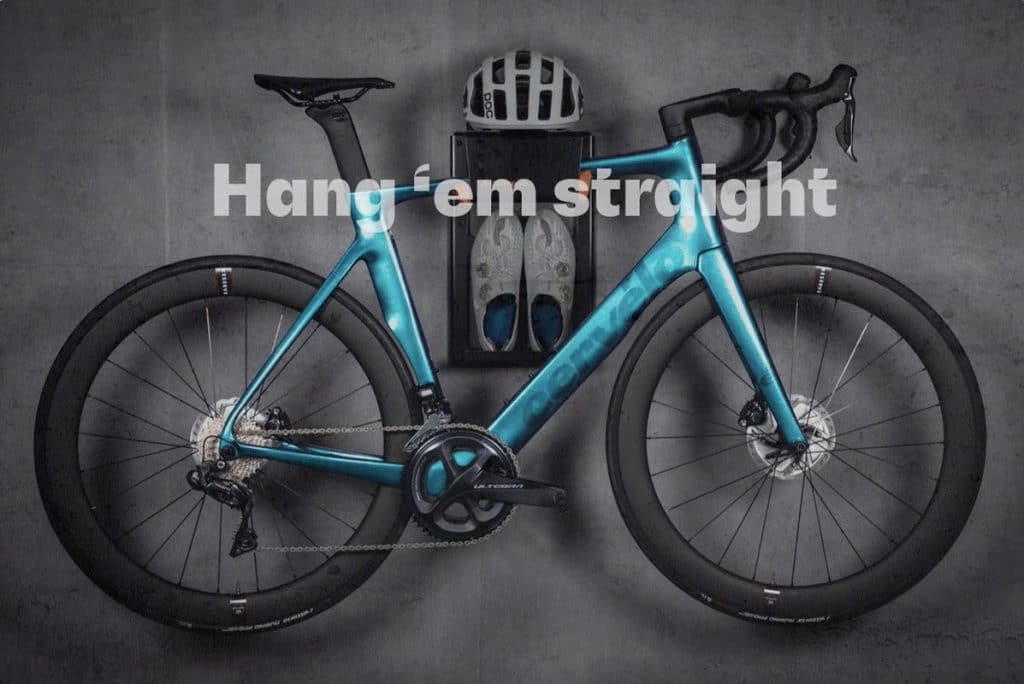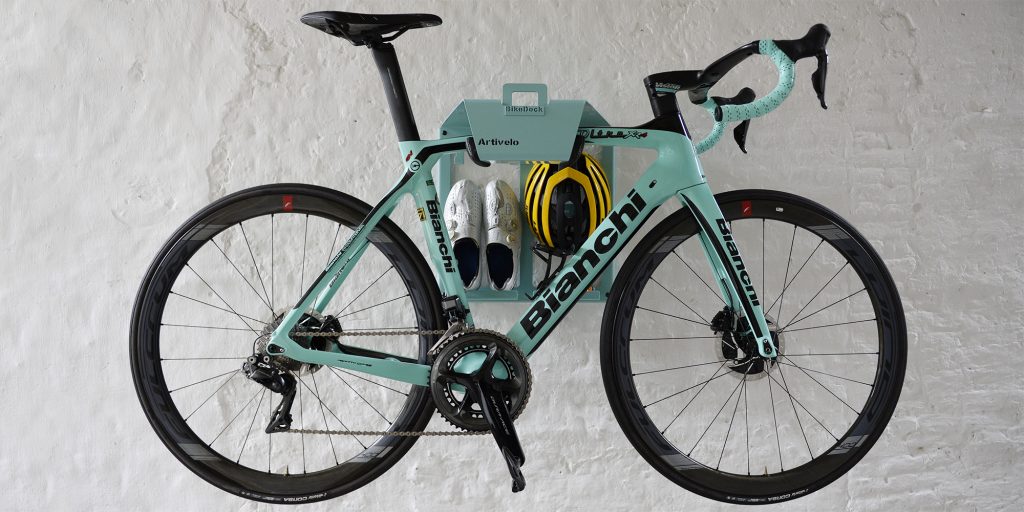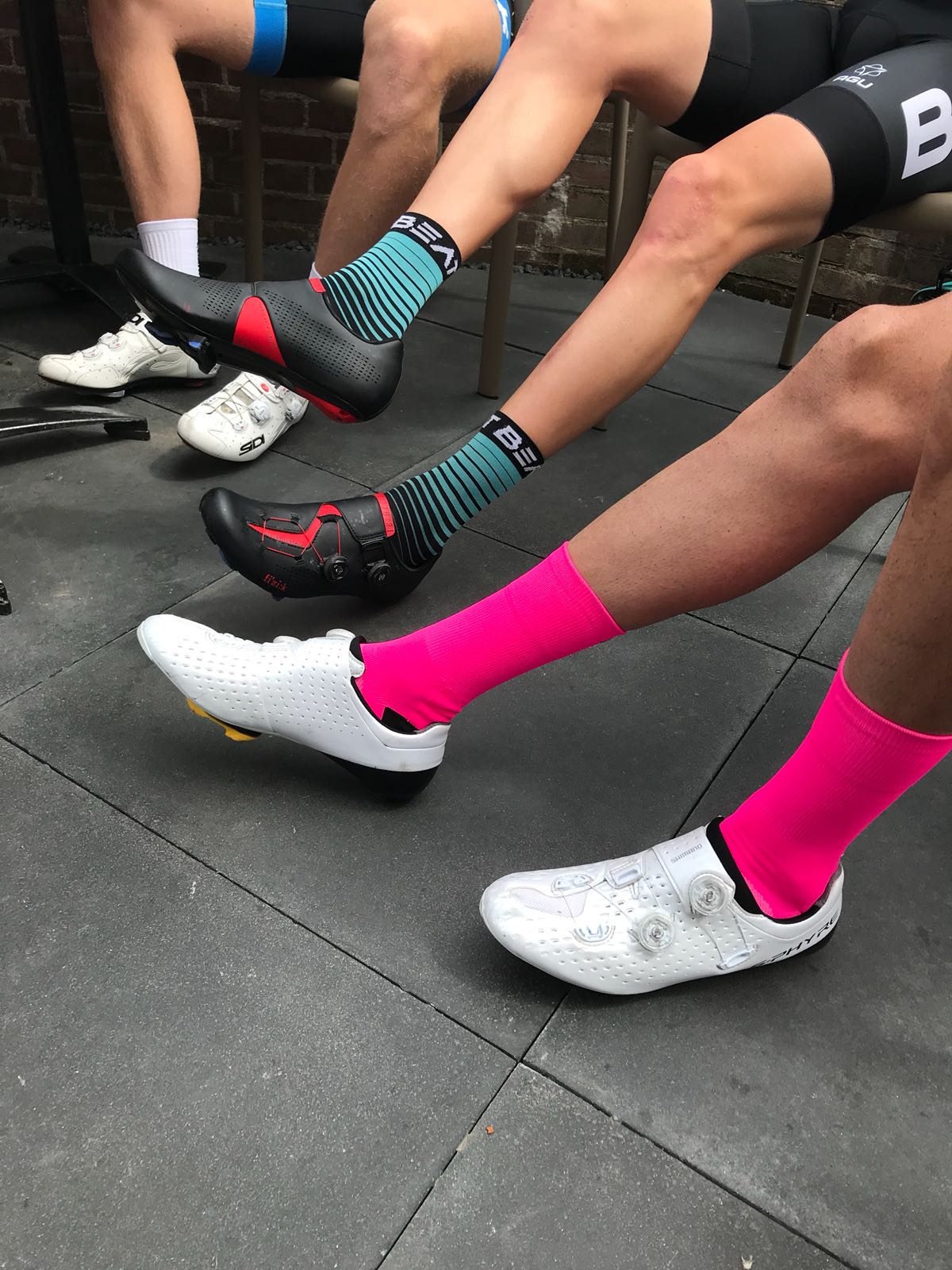
Fausto Coppi had no other choice than to wear white cycling socks. Plain. Probably ‘Merino’ wool, with a fit that was barely worthy of the name. In almost all of Coppi’s photos, you only see baggy, shapeless white things at the bottom of his ankles. Slightly more comfortable than wearing no socks at all. They were probably only intended to avoid blisters and collect sweat that dripped from his legs, so it would not make its way into his shoes. To be fair, that was 70 or 80 years ago.
Early in his carrier, seemingly because he had nothing else, Lance Armstrong was teased for his long, black basketball socks, which were way too long. Later, he combined them with black cycling shoes and created a personal trademark. It appears Bradley Wiggins was paying close attention, because he did the same many years later.
Cycling socks today
In the last few years, socks have quickly become very important in cycling. Production and knitting techniques have changed completely, and many high-tech yarns have become available. Socks now have a different anatomical fit and feature various zones that are able to quickly dispose of sweat. They ensure extra absorption, cooling or warmth and, thanks to silver ions, are anti-bacterial and have various compression zones.
Compression socks are a technological tours de force. If they fit well, they can help – or, more precisely, support – your performances. During physical exercise, blood flows through muscles in your lower legs and back to the heart, swapping waste products for oxygen-rich blood as it travels. Compression socks support this process, because wearing cycling socks makes it easier for your body to dispose of waste products. This means fewer waste products – acidosis – in your lower legs, thus allowing your muscles to operate more effectively. The compression principle also serves a purpose after physical exercise, namely during the recovery process. And it also helps to fight muscle pain.
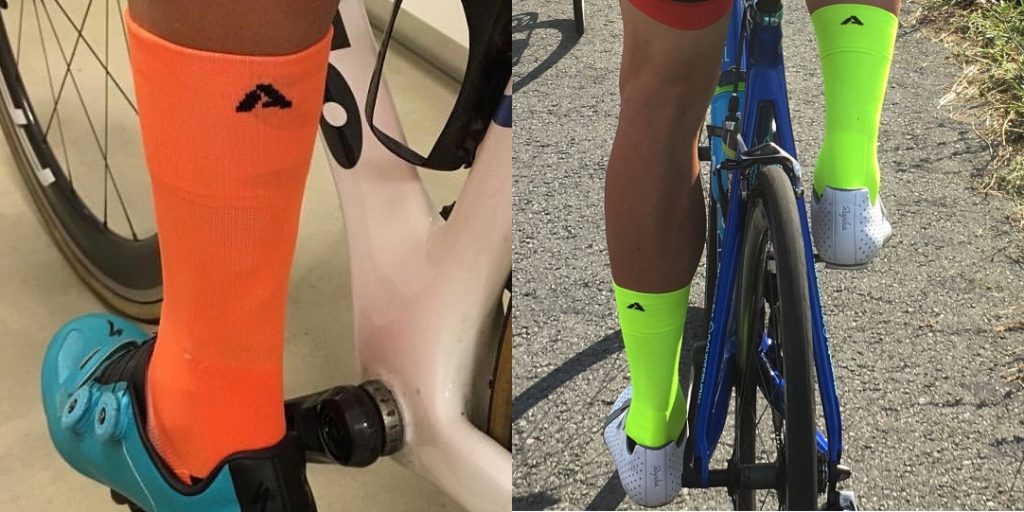
Compression socks have long since been banned for professional cyclists during races, which is rather surprising. If every professional cyclist can wear them, then surely any individual advantage would be lost? In the meantime, the same – sometimes unfathomable – watchdog for professional cyclists, the Union Cycliste Internationale (UCI), has also said that cycling socks worn by professional cyclists cannot be higher than half-way between the ankle and knee.
The sky is the limit
But what about amateur cyclists? The sky is the limit. Anything is possible. There are countless – often small and specialised – companies which produce cycling socks. Because these days, (almost) anything is permitted. Complete photo prints, incredibly bright colours, reflective features and even text, like the famous ‘HELL YEAH’, divided between the left and right sock. And sock heights range from the ankle to just below the knee and high white socks without a logo such as Mathieu van der Poel. So there is something for everyone, particularly when you’ve mastered grooming.
Grooming: How well do you groom before getting on your race bike?

Artivelo cycling socks
Thanks to the very latest techniques, Artivelo cycling socks are among the best socks on the market. Available in orange, black, pink and yellow. Oh, and – thankfully – they are also available in white.
Text: Chucknance

